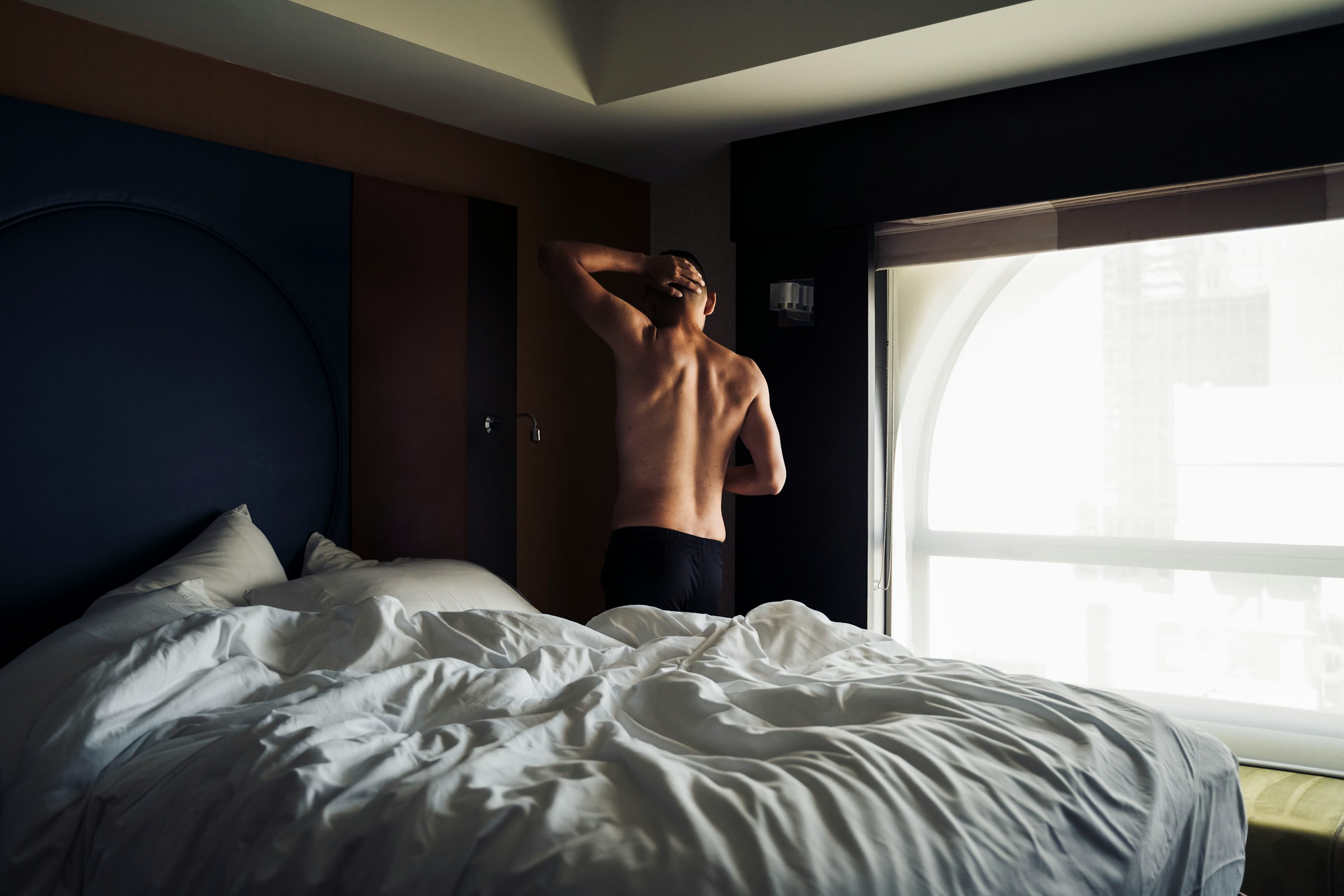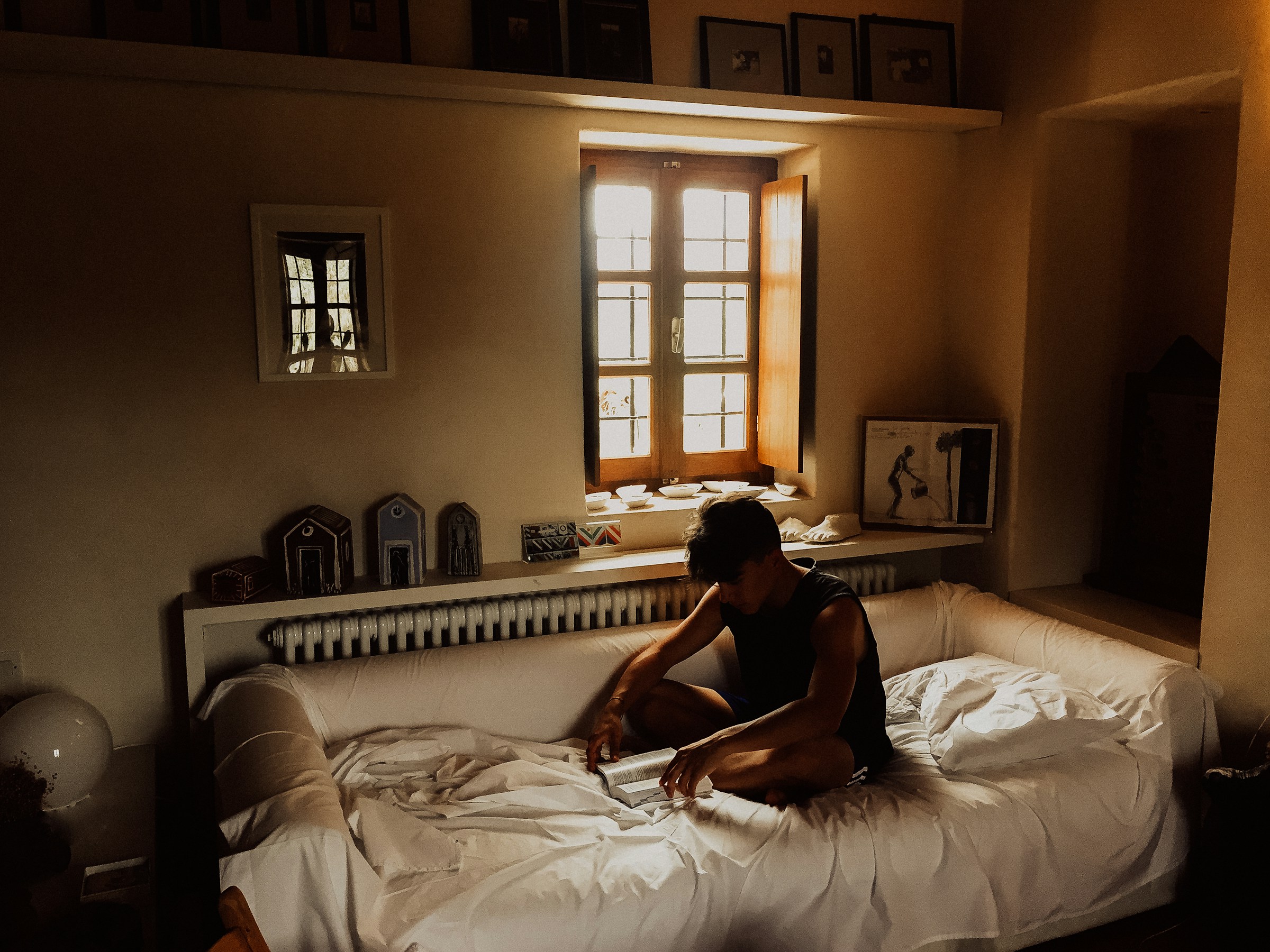
Want to become a morning person? Find effective strategies for waking up early and feeling refreshed. Start your journey today!
Waking up early can feel impossible if you're not a morning person. You could hit the snooze button a few times before dragging yourself out of bed, or you don't get up until just before leaving for work. You’re not alone if you struggle to get out of bed in the morning. Many people feel sluggish in the morning, especially when not exposed to enough natural sunlight. Fortunately, there are ways to beat the morning slump and learn how to become a morning person. This article will explore how to quickly wake up early, feel energized in the morning, and maintain a consistent routine that improves productivity and overall well-being. One of the best ways to achieve these goals is using daily sunlight exposure tracker. SunSeek offers a valuable tool to help you become a morning person by improving your exposure to natural sunlight indoors and outdoors.
Table of Contents
Why Do I Struggle to Be a Morning Person?

Circadian Rhythms: Your Internal Sleep Clock
Your circadian rhythm dictates your sleep-wake cycles. It is an internal body clock that regulates your energy levels throughout the day. The circadian rhythm operates on a 24-hour schedule that generally follows the patterns of the sun. Most people feel awake when it is light and sleepy when it is dark, but the specific timing of these schedules can vary from person to person. That variability is what is known as a chronotype.
The Impact of Genetics on Sleep Patterns
Chronotypes are reflected at a physiological level, down to the central nervous system. In morning people, brain pathways are most excitable, empowering peak performance early in the day. In night owls, it is the opposite.
The Dangers of Inconsistent Sleep Schedules
Neither chronotype is inherently better than the other. Night owls are at a disadvantage in many ways. From school to work, essential activities are often scheduled for the morning, when night owls are still sleepy and experience lower cognitive and physical performance.
Can You Change Your Chronotype?
Your chronotype is genetic, but your age, environment, and activity level can all influence it. For example, in one study, night owls could shift their sleep cycle forward by as much as two hours through a handful of ordinary lifestyle changes. Night owls in the study could shift their sleep cycles forward without negatively impacting the total amount of sleep they got each night. They even declared feeling less depressed and less stressed. When researchers conducted tests of their reaction times and grip strength, they found that night owls performed better than before in the morning, which was usually their weakest time of day.
Age and Gender Affect Chronotypes
Your chronotype may also shift due to age, gender, and physical changes. For example, one study found that women are more likely than men to be early birds from childhood through their 20s but are more likely than men to become night owls after age 45. The chronotypes of pregnant people shift earlier during the first and second trimesters before returning to normal during the third trimester. Having a stroke may also affect your chronotype.
Embrace Your Chronotype
It’s perfectly fine to be a night owl, an early riser, or in the middle (where most of us are)—none are “better” than the others. There’s even evidence that says fighting against your chronotype can cause physical and mental health issues. So, if you are getting enough sleep and generally have a balanced lifestyle, embrace your chronotype’s tendencies. You may find that your chronotype shifts as you age anyway.
Related Reading
• Morning Routine Checklist
• Best Morning Routine
• How to Reset Your Circadian Rhythm
• Productive Morning Routine
How to Become a Morning Person and Build a Habit That Lasts

1. Shift Your Bedtime to Become a Morning Person
To become a morning person, you first need to become an early-to-bed person. But how? Count back from when your alarm rings (or the time you want it to ring), aiming for seven to nine hours a night. That will eventually become your new target bedtime. “It’s important to adjust your sleep time gradually,” Dr. Drerup says. If you’re used to turning in well after midnight, willing yourself to fall asleep at 10 p.m. suddenly is sure to backfire. Instead, aim to go to bed 15 or 20 minutes earlier than usual for a few days. Then, push it back another 15 minutes for several more days, and so on, until you reach your bedtime goal.
2. Maintain Good Sleep Hygiene
Establishing healthy sleep practices, commonly called sleep hygiene, is beneficial before shifting your sleep schedule. Sleep hygiene encompasses a set of habits that are said to promote better sleep, such as:
Exercising regularly avoiding caffeine, nicotine, and alcohol, especially before bed Avoiding afternoon and evening naps.
Finding relaxing pre-bed activities.
Sleep hygiene also makes your bedroom conducive to better sleep by creating a dark, quiet, and calm environment. It may help to use blackout curtains, invest in high-quality bedding, and clear the room of clutter.
3. Make a Schedule to Become a Morning Person
I know what you’re thinking because I thought the same thing: “I can’t possibly get up earlier because I have zero willpower.” But morning people aren’t using willpower to rise and shine; they’re using habits. “Habits eliminate the need for self-control,” writes Gretchen Rubin in her book Better Than Before. “Habits make change possible by freeing us from decision-making.” In other words, early risers don’t think about getting up—they just do it. A friend echoed this idea when I asked him how he woke up at 4:30 a.m. to work out. “It’s not a question; I just do it,” he told me. The most effective way to wake up early is to go to bed early. To help establish this new habit, I followed the advice of Jeff Sanders, a productivity coach and author of The 5 A.M. Miracle: Dominate Your Day Before Breakfast.
Sleep Your Way to Success: How a Consistent Nightly Routine Can Transform Your Mornings
He suggests creating a nightly schedule. After all, “the most effective way to wake up early is to go to bed early,” Sanders says. Sanders’s “stop time” is 8 p.m., when he turns off all technology (to avoid melatonin-suppressing blue light) and starts preparing for bed. Trusted Source: Since I wasn’t trying to wake up at 5 a.m. (!), I designated 9:30 p.m. as mine. I entered my new routine into my calendar and set alerts on my phone to pop up at each increment. (Another tip from productivity pros? If it’s on the calendar, it happens.)
9:30 PM: Start getting ready for bed.
10 PM: Get in bed.
10-10:30 PM: Read! (Something I’d never made time to do—a nice benefit of sleeping early.)
10:30 PM: Turn lights off.
6:30 AM: Wake up after eight hours of sleep!
4. Rely on Natural Light
Your body’s circadian rhythm—your internal clock—has particular needs. “Our circadian rhythms are responsive to light and dark,” Dr. Drerup explains. Being exposed to bright light first thing in the morning helps you feel more alert, and it also helps shift your internal rhythm toward an earlier wake time. Natural light is best, so get outside or open your bedroom window.
Light Up Your Life: A Comprehensive Guide to Using Light for Better Sleep and Mornings
If you can’t get outside or your room is deprived of natural light (darn you, basement apartment!), try a light therapy lamp that mimics the spectrum of natural light. Being exposed to light for the rest of the day is also essential. It’s one of the ways your body knows when it’s time to sleep and when you’re supposed to be awake. “During the daytime, try to get outside and get some natural light on days when there’s sunlight,” Dr. Drerup suggests. “That helps keep your circadian rhythm on track.”
5. Stop Hitting Snooze
I know, it’s un-American not to hit snooze. (One survey found that more than half of us do it daily.) But hitting snooze to get more sleep has the opposite effect: It makes you groggier by interrupting your body’s sleep cycles. Plus, it’s not a great way to start your day: “Snoozing inadvertently becomes a reactive choice, which leads to further reactivity,” Sanders says. “When you begin the day reacting to your environment instead of proactively shaping it, you find yourself on the defensive.” Opting for a quality alarm clock, especially with a gradual light feature, can help with early risings. Theoretically, as the light slowly intensifies, it mimics the natural sunrise, making mornings feel more natural and less jarring. There’s also evidence that choosing melodic music for your alarm (instead of beeping) might help you overcome sleep inertia quickly.
6. Get Moving in the Morning
An early morning jog might sound like punishment if you’re a night owl. One productivity guru suggests doing the one thing you dread most right after you wake up. Research shows that willpower is strongest in the early a.m., then steadily depleted over a day. This manifests in the “ugh, it’s 6 p.m., and I don’t feel like going to the gym” feeling. But if you can get into the habit, morning exercise can give you the energy to jump-start your day.
7. Make Mornings More Pleasant
Dr. Drerup suggests scheduling something to look forward to in the morning so that getting up feels less like a slog.
A hot cup of coffee, sipped silently, while you take on the daily crossword puzzle?
Eat a healthy breakfast while you read a book.
Knowing something pleasant awaits can help you take that first painful step out of bed.
8. Get High-Quality Sleep
Sleep isn’t just about quantity; it’s also about quality. Getting up in the morning can feel impossible if you’re tossing, turning, and waking up all night. Everything from your diet and stress levels to your partner’s tendency to snore can get in the way of a good night’s sleep, so make sure you’re taking steps not just to go to sleep but to stay asleep. You may need to:
Cut out caffeine before bedtime.
Move your workout to earlier in the day.
Change the temperature of your bedroom.
Block outdoor lights from disrupting the darkness.
Sleep with socks on.
Practice calming your racing mind so you can fall asleep more quickly.
It may seem like an endless list, but making just a few changes can make a world of difference in the quality of your sleep.
9. Be Consistent
Routine is key, Dr. Drerup says, and deviating from it too much can throw things back into disarray. “Try to keep a consistent wake time,” she continues. “Whatever schedule you’re keeping, be consistent with it.” That doesn’t mean you have to be inflexible with your sleep schedule. If you want to stay out late at a Friday night event or catch some extra ZZZs on vacation, that’s okay—every once in a while. “Life happens,” Dr. Drerup acknowledges. “But try to limit these types of exceptions to your new schedule, or they’ll snowball and push you back toward your old schedule again.”
10. Maintain Your Motivation
When you feel tempted to hit snooze and go back to sleep, it’s helpful to remember why you’re trying to make this change in the first place. Make sure you identify your reasons so that you have to remind yourself of them.
Do you want to become a morning person so you can be more productive (or just less of a zombie) at work?
Can you spend more time with your family on weekends?
So you don’t wake up at noon feeling like you’ve wasted half the day?
“Thinking about your reasons can help keep you motivated,” Dr. Drerup says.
Related Reading
• Morning Rituals
• How to Have a Productive Day
• Benefits of Morning Sunlight
• How to Wake Up Without an Alarm
Download Our App to Track your Daily Sunlight Exposure Today

Seasonal Affective Disorder is no joke. This type of depression comes and goes with the seasons. While it’s most common in the winter when there is less natural sunlight, some people experience it in the summer, too. Symptoms can range from mild to severe and may interfere with daily functioning. When left untreated, seasonal depression can lead to major depressive disorder. Sunlight exposure can help alleviate the symptoms of SAD. Outside in the natural light during the day can boost your mood, especially if you engage in physical activity. If you have winter SAD, you may want to check out the app’s winter recommendations. SunSeek can help you optimize your outdoor time to get the most out of the sunlight this season.
SunSeek: Your Personalized Guide to Sunlight Exposure
SunSeek helps you optimize your daily sunlight exposure by tracking and providing personalized recommendations based on your:
Location
Skin type
Health goals
The app combines real-time UV monitoring with guided outdoor activities throughout the year to help you:
dImprove sleep
Boost energy levels
Maintain optimal vitamin D levels.
By aligning your daily routine with natural light cycles, SunSeek makes harnessing sunlight's health benefits easy while ensuring safe exposure through personalized timing recommendations and cloud coverage forecasts. Download our app now for your daily sunlight exposure tracker.
Related Reading
• Huberman Morning Sunlight
• 10 Benefits of Waking Up Early
• The 5AM Club Morning Routine
• Benefits of Being a Morning Person
• Books About Waking Up Early
• Morning Sunlight Circadian Rhythm


